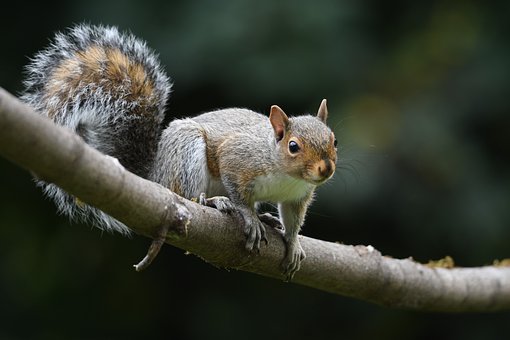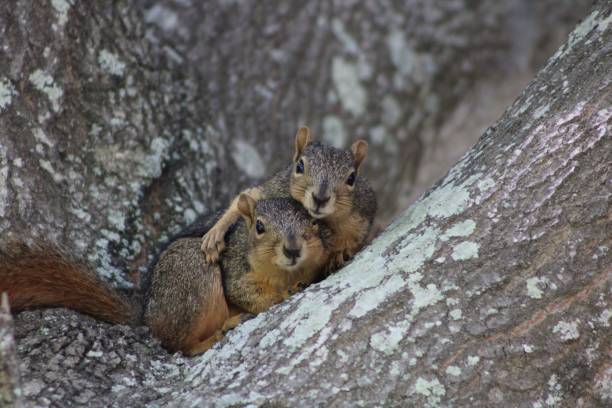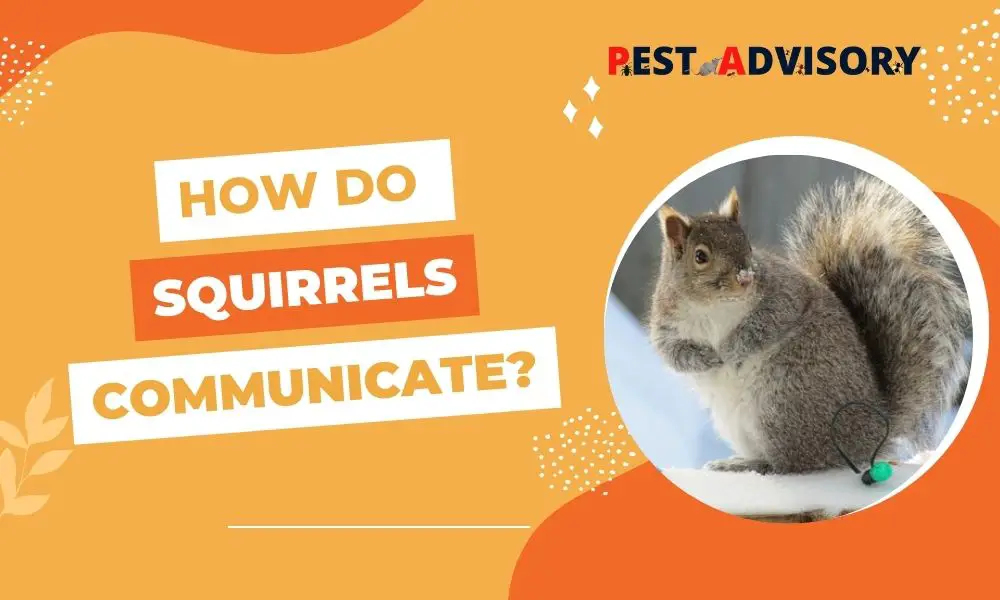Squirrels are well-known for their cute appearance and acrobatic abilities, but did you know that they are also excellent communicators? Squirrels use a variety of methods to communicate with each other, including visual, vocal, and chemical signals. In this article, we will explore how squirrels communicate and the importance of understanding their communication methods.
Different Ways Squirrels Communicate
Visual Communication
Squirrels use a variety of visual signals to communicate with each other.
Tail flicking
Tail flicking is one of the most common visual signals. When a squirrel flicks its tail rapidly, it is usually a sign of agitation or a warning to other squirrels in the area, like “there is a predator nearby, be careful”.
Important Note: If you're tired of pests and want a reliable solution, then you should definitely consider seeking help from a professional pest control company. DIY solutions can be effective, but if you're dealing with a significant pest infestation, you don't want to rely solely on DIY methods. Pest control companies typically don't charge huge fees. You can fill out this form to receive free quotes from the top local pest control companies, and compare the quotes and see for yourself. Then, finally, your pest problems will be eliminated for good.
Ear movement
Ear movement is another important visual signal. Squirrels can rotate their ears to detect sounds from different directions, and they can also flatten their ears against their heads to show fear or submission.
Posture and facial expressions
Posture and facial expressions are also important visual signals. For example, a squirrel may stand up on its hind legs to get a better view of its surroundings, or it may bare its teeth to show aggression.
Vocal Communication
Squirrels also use vocal signals to communicate with each other.
Chirping
Chirping is a common vocal signal and is often used to communicate with other squirrels in the area.
Barking
Barking is another common vocal signal and is often used to warn other squirrels of danger.
Whining and growling
Whining and growling are also used as vocal signals, but they are less common.
Chemical Communication
Squirrels use chemical communication to mark their territory and communicate with other squirrels. There are several ways in which they do this:
Scent marking
Squirrels use their scent glands to mark their territory. They rub their cheeks and chin on trees, branches, and other objects, leaving their scent behind.
Urination and defecation
Squirrels also use urine and feces to mark their territory. They will urinate and defecate in specific locations, leaving their scent behind as a way of communicating with other squirrels.
Pheromones
Squirrels also emit pheromones, which are chemicals that help them communicate with other squirrels. These pheromones are particularly important during the mating season when male squirrels use them to attract females.

Social behavior
Squirrels are social animals that live in groups, sharing resources and providing protection for each other. They also engage in other social behaviors, including:
Group living
Squirrels live in groups, known as drays, which are made up of several individuals. These groups share resources and provide protection for each other.
Nest building
Squirrels build nests, known as dreys, which they use to raise their young and seek refuge from predators. They will also build several nests in different locations to have multiple options in case of danger.
Mating behavior
During the mating season, male squirrels will engage in courtship behavior to attract a female mate. This includes vocalizations, chasing, and displays of agility.
Squirrels are never monogamous. So the mating becomes a sort of competition. The female chooses the one with the best dance.
The waving of the tail tells the desired female that the male is interested and is making efforts to woo her.
Sounds Made by Squirrels
There are several sounds made by squirrels to communicate a variety of emotions. A study conducted by the City of Palo Alto revealed that the vocalization of squirrels ranges from 0.01 to 10-kilohertz frequency.
The sound can be a small chirp, some chattering, a regular or irregular series of barks, shrill screams, and even low purrs.
Teeth chattering
Squirrels do not attack immediately. They are more of a turn-tail and run creatures. Their size makes them vulnerable to almost all creatures.
But just like even the most easily frightened of us will hesitate to run leaving behind our homes and children, similarly, if the squirrel is threatened in her nest, it is unlikely to run. It will stay and fight.
It will wave its tail, but it will also start an incessant chattering of teeth until the threat is neutralized. This chattering communicates to other squirrels that they are encroaching and threatening their ownership and babies.
Warning Calls
One of the most common communication methods used by squirrels is warning calls. When they sense danger, they emit a series of chirps or barks that warn other squirrels of the approaching threat. These calls can be heard from quite a distance away and are often repeated to ensure that all squirrels in the area are aware of the danger.
Alarm calls
Alarm calls are similar to warning calls but are reserved for more immediate threats. For example, if a predator is spotted nearby, a squirrel may let out a high-pitched scream to alert other squirrels to the danger. This call is often accompanied by tail flicks and other body language that communicate the urgency of the situation.
Apart from tail-waving, squirrels also make some alarm calls to alert other squirrels. It is a series of barks like a “kuk” sound followed by a long sound of “quaa”. Sometimes these alarms start with slow moans also.
Mating calls
Squirrels also use communication with court potential mates. Male squirrels may perform a series of acrobatic displays to impress female squirrels, such as jumping from tree to tree or performing elaborate vocalizations. Female squirrels may also use vocalizations to communicate their interest in a male suitor.
A purr-like sound “muk-muk” indicates the pursuit of a female by a male squirrel. The baby squirrels make this sound when asking for food.

Battle calls
Sometimes the squirrels let out rattles and screeches to communicate their presence and warn off encroaching squirrels.
When Are Squirrels Dangerous
Squirrel bites are dangerous. So you need to stay away from an upset or aggressive squirrel. Some signs they can attack are:
- Erect postures
- Wagging of tails
- Rattles and screeches
Conclusion
Squirrels are one of the most skittish creatures around. Unless you are a regular visitor, they will never come near.
If you want to understand what these cuties are chattering and rambling about, you need to notice their body language. You need to have an idea about the types of sounds they make.
(Sounds made by squirrels are discussed in my other article named “what sounds do squirrels make”).
I hope this article has thrown some light on the recognition and understanding of squirrel communication. Try remembering these while you observe squirrels next time. But yes, also be careful if you notice aggressive signs.
Cheers, to your next squirrel observation!

